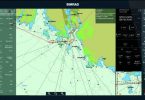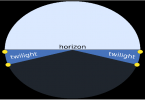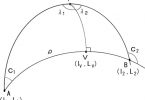The Software
Should be as the IMO Performance Stanadards [Resolution A817(19)] It consists of the user interface (UI) and the so-called ECDIS kernel, the software that makes it possible to read the data and display a chart. This software is also called ‘function library’. In addition to the chart picture, the user interface shows buttons and keys for operating the nautical chart.
The Data
Electronic navigational Chart (ENC) –There are two different types of electronic charts in use with ECDIS and all navigation officers and marine managers should be aware of their differences and limitations.
Electronic Navigational Charts (ENC), commonly referred to as ‘vector charts’, are layered with digital information enabling the mariner to electronically interrogate features on the chart such as buoys, navigational marks, traffic separation schemes (TSS) and safety contours with detailed information displayed for the user
ENC’s enable the ECDIS to set different types of navigational alarms to act as a warning to the mariner. These warnings are usually visual as well as audible to give a clear indication of any dangers that lay ahead. The navigational alarms can include such hazards as shallow depths, shoals and isolated dangers as well as minimum under-keel clearance (for example, anti-grounding alarm) provided the ships echo sounder has been integrated with the ECDIS, draught details and alarm parameters specified. Early warning alarms of approaching waypoints and alteration of course points, position fixing reminders and changing electronic chart alarms can also be specified within the alarm parameters. ENCs provide the mariner with a clear display of the navigational situation without distorting the chart display when reducing the chart scale.ENC must conform to IHO (International Hydrographic Office) S-57 standards.
Overreliance on ECDIS when using ENC data may prove dangerous if inadequate training and familiarisation has been given. Unfamiliarity with ENC data and ECDIS functionality may cause operator error. The International Hydrographic Office has issued a circular warning that ECDIS may not display some isolated shoal depths when operating in ‘base’ or ‘standard display’ mode. As a result, route planning and monitoring alarms may not always be activated when approaching such dangers and may result in groundings.
Mariners must ensure their ECDIS display has been set-up properly to the circumstances and conditions so that it includes all information necessary for safe navigation. ECDIS display modes that are set-up in ‘base’ display mode may remove vital information.






can u comment regarding how to set up the Ecdis?
For ECDIS, you need to comment in some detail on two important parameters with regard to Voyage Planing and Monitoring: ‘CATZOC’ and ‘SCAMIN’